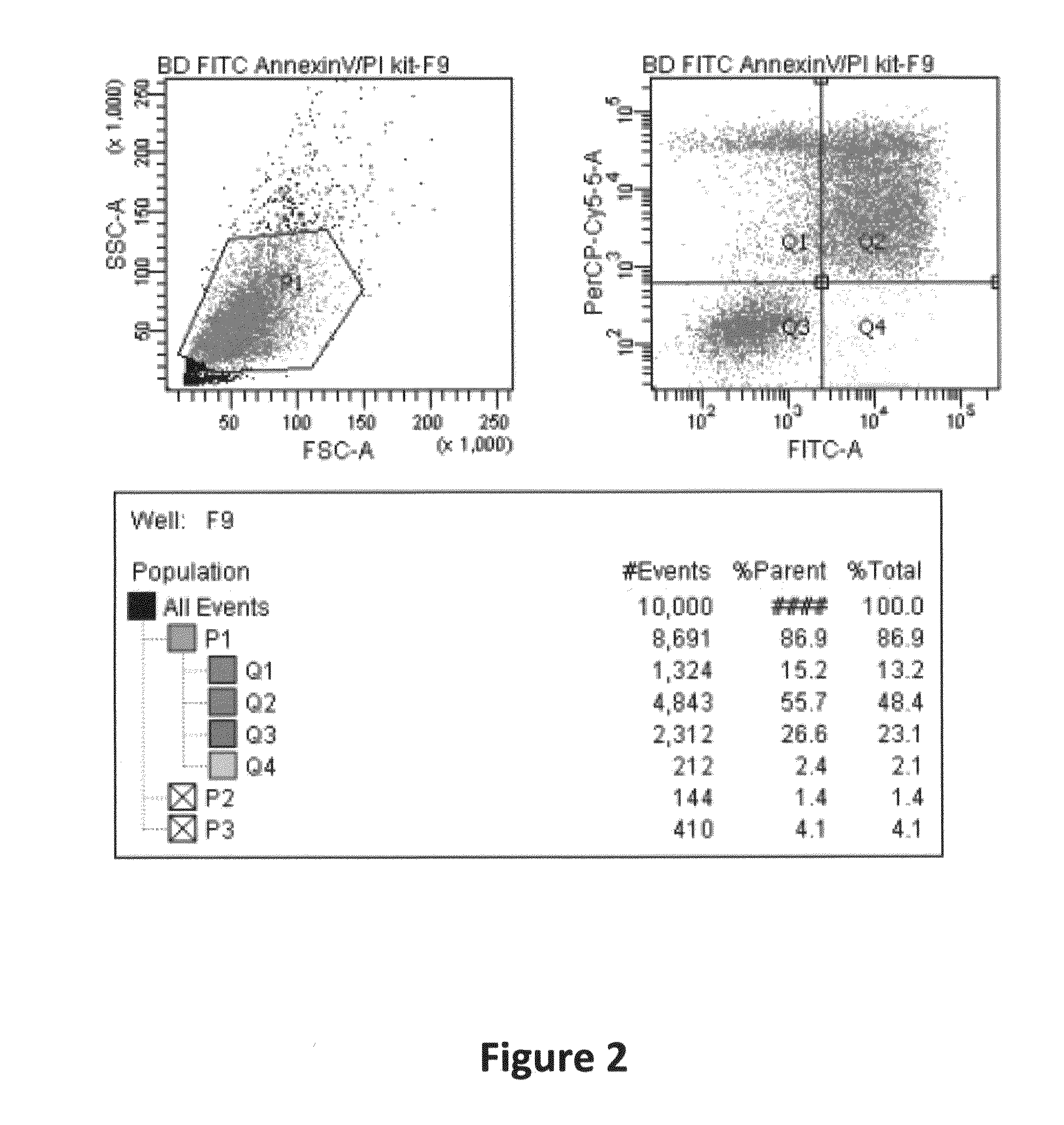Bi-specific fusion proteins
a fusion protein and bi-specific technology, applied in the field of fusion proteins, can solve the problems of irreversible tissue damage, necrosis and apoptosis, lack of oxygen, etc., and achieve the effect of decreasing pathological tissue damage in the patien
- Summary
- Abstract
- Description
- Claims
- Application Information
AI Technical Summary
Benefits of technology
Problems solved by technology
Method used
Image
Examples
example 1
Preparation of a Representative Bi-Specific Fusion Protein
[0377]A bi-specific fusion protein in which targeting polypeptide domain binds to DNA and the activator domain is NRG1 is prepared. The two domains are joined by a modified human serum albumin (HSA) linker. The NRG1 is recombinantly fused to the amino terminus of the HSA linker incorporating a short connector polypeptide and the anti-DNA scFv is recombinantly fused to the carboxy terminus of the modified HSA linker incorporating an additional short connector polypeptide. The modified HSA linker contains two amino acid substitutions. A cysteine residue at position 34 of native HSA is mutated to serine in order to reduce potential protein heterogeneity due to oxidation at this site. An asparagine residue at amino acid 503 of native HSA, which may be sensitive to deamidation, resulting in decreased pharmacologic half-life, is mutated to glutamine. The modified HSA linker confers an extended circulating half-life on the bi-specif...
example 2
In Vitro Activity of a Bi-specific Fusion Protein
[0378]The activity of both components of the representative bi-specific fusion protein prepared in Example 1 (in which the targeting polypeptide domain binds to DNA and the activator domain is NRG1) are tested using an ELISA designed to give activity only when both arms of the bi-specific fusion protein are bound to their substrates simultaneously. The ELISA is performed essentially as described in Stokes et al., J. Clin. Pathol. 35(5): 566-573 (1982) and Gripenberg et al., Scand. J. Immunol. 1:151-157 (1978). More specifically, 1 to 50 ng / ml solution of the bi-specific fusion protein in PBS is added to the wells of a plate pre-adsorbed with DNA (Anti-DS-DNA antibody ELISA kit (Alpha Diagnostic International, Dist by AutogenBioclear, UK) and incubated and washed according to manufacturer's directions until the step in which the detection antibody is added. At this stage, 100 μl of 1-50 ng / ml solution of Biotinylated goat anti-human NR...
example 3
In Vivo Activity of a Bi-Specific Fusion Protein
[0380]The in vivo activity of the representative bi-specific fusion protein prepared in Example 1 is determined by detecting signaling changes in a molecule that is regulated by the activator domain of the fusion protein. For the activator domain in this fusion protein NRG1, activity is assessed by detection of increased phosphorylated ErbB-3 in cells of hearts treated with the bi-specific fusion compared to untreated or mock treated hearts. Myocardial infarction is generated in C57BL / 6 mice by ligation of the left coronary artery (LCA) following endotracheal intubation, ventilation and thoracotomy. Coronary occlusion is confirmed by acute inspection of color change of the left ventricle wall, and ST elevation on the electrocardiogram before chest closure. Sham-operated mice undergo the same surgical procedure without LCA ligation.
[0381]Hearts from normal mice or those following induction of myocardial infarction, from both control and...
PUM
| Property | Measurement | Unit |
|---|---|---|
| dissociation constant Kd | aaaaa | aaaaa |
| dissociation constants | aaaaa | aaaaa |
| half life | aaaaa | aaaaa |
Abstract
Description
Claims
Application Information
 Login to View More
Login to View More - R&D
- Intellectual Property
- Life Sciences
- Materials
- Tech Scout
- Unparalleled Data Quality
- Higher Quality Content
- 60% Fewer Hallucinations
Browse by: Latest US Patents, China's latest patents, Technical Efficacy Thesaurus, Application Domain, Technology Topic, Popular Technical Reports.
© 2025 PatSnap. All rights reserved.Legal|Privacy policy|Modern Slavery Act Transparency Statement|Sitemap|About US| Contact US: help@patsnap.com



